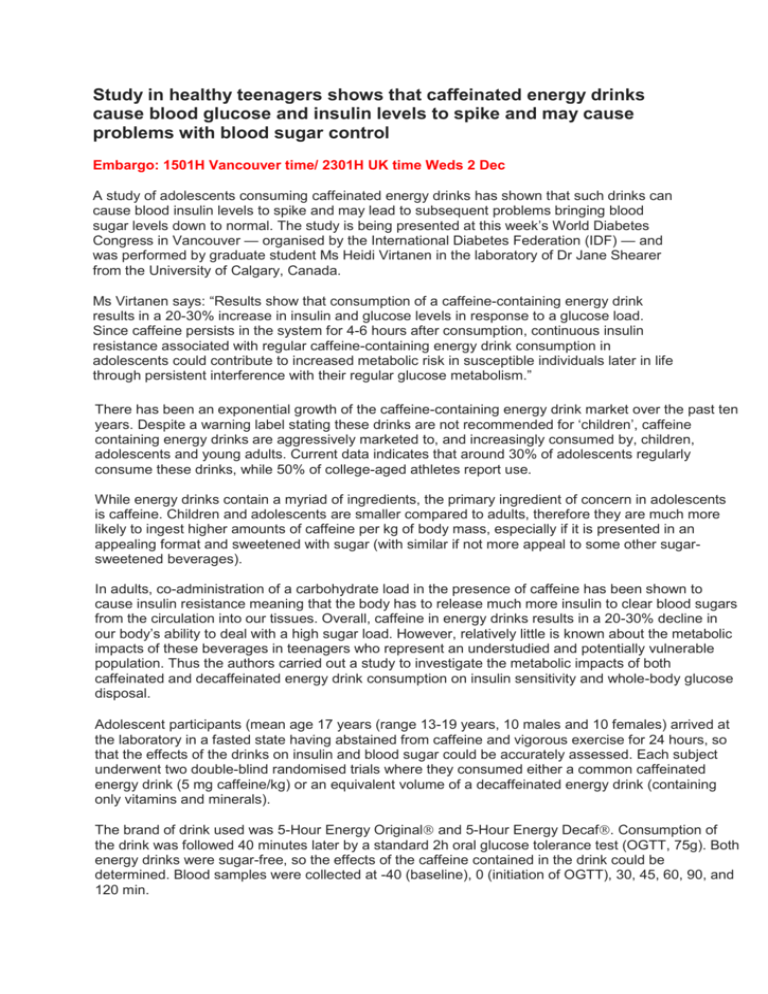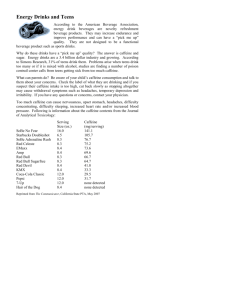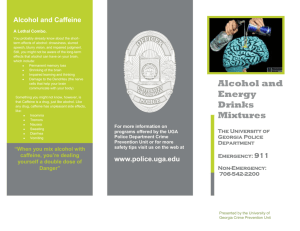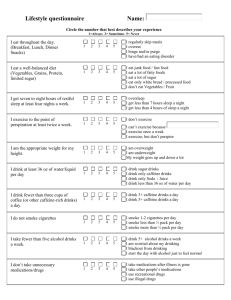Media Release
advertisement

Study in healthy teenagers shows that caffeinated energy drinks cause blood glucose and insulin levels to spike and may cause problems with blood sugar control Embargo: 1501H Vancouver time/ 2301H UK time Weds 2 Dec A study of adolescents consuming caffeinated energy drinks has shown that such drinks can cause blood insulin levels to spike and may lead to subsequent problems bringing blood sugar levels down to normal. The study is being presented at this week’s World Diabetes Congress in Vancouver — organised by the International Diabetes Federation (IDF) — and was performed by graduate student Ms Heidi Virtanen in the laboratory of Dr Jane Shearer from the University of Calgary, Canada. Ms Virtanen says: “Results show that consumption of a caffeine-containing energy drink results in a 20-30% increase in insulin and glucose levels in response to a glucose load. Since caffeine persists in the system for 4-6 hours after consumption, continuous insulin resistance associated with regular caffeine-containing energy drink consumption in adolescents could contribute to increased metabolic risk in susceptible individuals later in life through persistent interference with their regular glucose metabolism.” There has been an exponential growth of the caffeine-containing energy drink market over the past ten years. Despite a warning label stating these drinks are not recommended for ‘children’, caffeine containing energy drinks are aggressively marketed to, and increasingly consumed by, children, adolescents and young adults. Current data indicates that around 30% of adolescents regularly consume these drinks, while 50% of college-aged athletes report use. While energy drinks contain a myriad of ingredients, the primary ingredient of concern in adolescents is caffeine. Children and adolescents are smaller compared to adults, therefore they are much more likely to ingest higher amounts of caffeine per kg of body mass, especially if it is presented in an appealing format and sweetened with sugar (with similar if not more appeal to some other sugarsweetened beverages). In adults, co-administration of a carbohydrate load in the presence of caffeine has been shown to cause insulin resistance meaning that the body has to release much more insulin to clear blood sugars from the circulation into our tissues. Overall, caffeine in energy drinks results in a 20-30% decline in our body’s ability to deal with a high sugar load. However, relatively little is known about the metabolic impacts of these beverages in teenagers who represent an understudied and potentially vulnerable population. Thus the authors carried out a study to investigate the metabolic impacts of both caffeinated and decaffeinated energy drink consumption on insulin sensitivity and whole-body glucose disposal. Adolescent participants (mean age 17 years (range 13-19 years, 10 males and 10 females) arrived at the laboratory in a fasted state having abstained from caffeine and vigorous exercise for 24 hours, so that the effects of the drinks on insulin and blood sugar could be accurately assessed. Each subject underwent two double-blind randomised trials where they consumed either a common caffeinated energy drink (5 mg caffeine/kg) or an equivalent volume of a decaffeinated energy drink (containing only vitamins and minerals). The brand of drink used was 5-Hour Energy Original and 5-Hour Energy Decaf. Consumption of the drink was followed 40 minutes later by a standard 2h oral glucose tolerance test (OGTT, 75g). Both energy drinks were sugar-free, so the effects of the caffeine contained in the drink could be determined. Blood samples were collected at -40 (baseline), 0 (initiation of OGTT), 30, 45, 60, 90, and 120 min. Results showed a 25% increase in blood glucose levels over the 2h measurement period following consumption of the caffeine containing energy drink compared to the control, decaffeinated version. Elevations in glucose with the caffeine containing energy drink were accompanied by a significant increase in insulin levels by 26%. Since the half-life of caffeine is in the range of 4-6 hours, these results suggest that consumption of a caffeine-containing energy drink in adolescents could affect glucose regulation for hours after ingestion. Dr Shearer says: “Elevated glucose and insulin responses may contribute to increased metabolic risk including type 2 diabetes and cardiovascular disease in susceptible individuals later in life.” In the next trial, Dr Shearer’s team will be administering energy drinks to adolescents that contain both caffeine and glucose. Subjects will be asked to drink two servings of ‘large format’ energy drinks a day or a control drink each day for three days. Their blood glucose levels will be continuously monitored over this period. She says: “In this trial, we anticipate that caffeine-containing energy drinks will also impair blood glucose regulation in everyday situations where subjects freely choose their food. Activity levels, sleep disturbances and mood will also be assessed.” Dr Shearer has served as a Health Canada advisor on energy drinks and their regulation. As a member of an expert panel, she helped to guide legislation on caffeine containing energy drink composition, warning labels and format (adopted in 2011). In addition, she has been invited to the U.S. National Institutes of Health as a speaker on the topic. She decided to pursue this study after recognising few studies examined caffeine containing energy drinks in adolescents. Ms Heidi Virtanen, University of Calgary, Canada. T) +1 403-955-8866 E) heidi.virtanen@albertahealthservices.ca Dr. Jane Shearer, Faculty of Kinesiology, University of Calgary, Canada. T) cell +1 403 200 9330 / office +1 403 220-3431 E) jshearer@ucalgary.ca Alternative contact: Tony Kirby of Tony Kirby PR Ltd in World Diabetes Congress Press Room T) Canada Cell phone +1 604 562 5965 / Congress Press Office +1 778 331 7625 E)tony@tonykirby.com Notes to editors: A PDF of the poster presentation is available on request. The authors declare no conflict of interest. This press release is based on abstract VA-1046, being presented at the congress. While initial data was submitted in the abstract, the presented poster represents updated results (20 subjects total). There is no ‘full paper’ available for journalists at this stage, however the authors are happy to answer questions using the contact details above.



